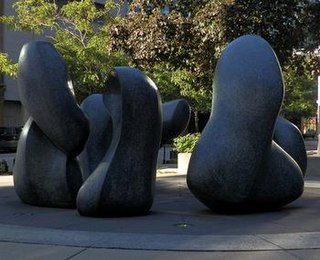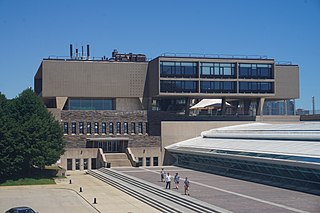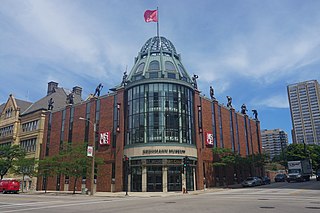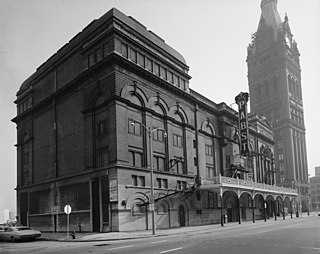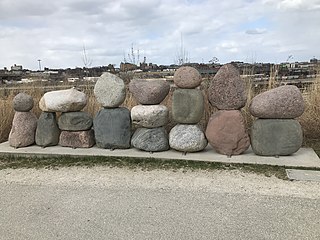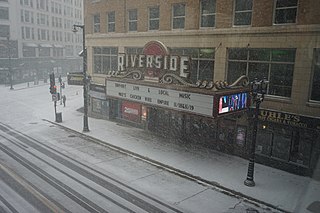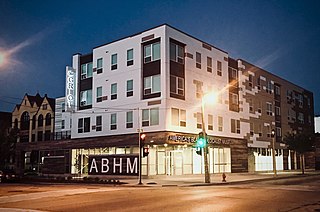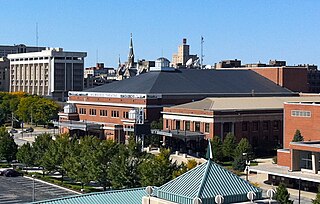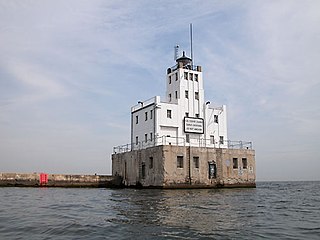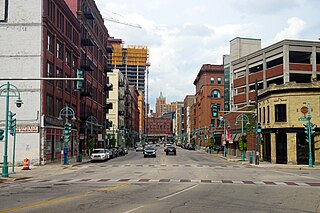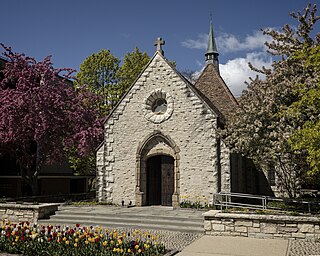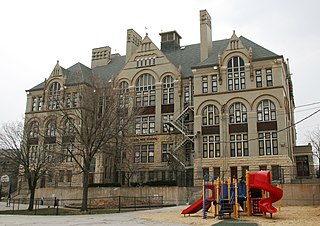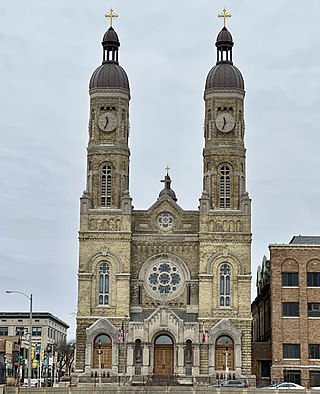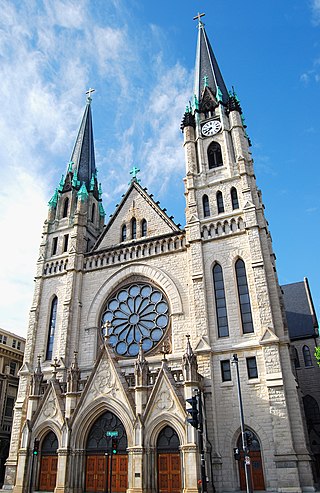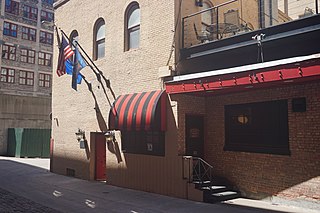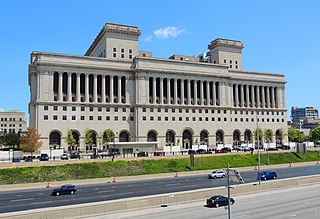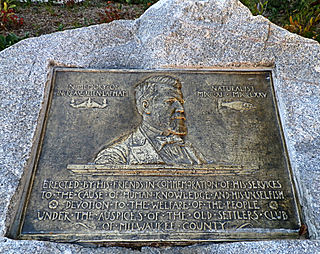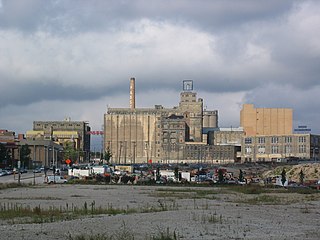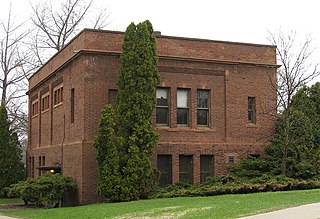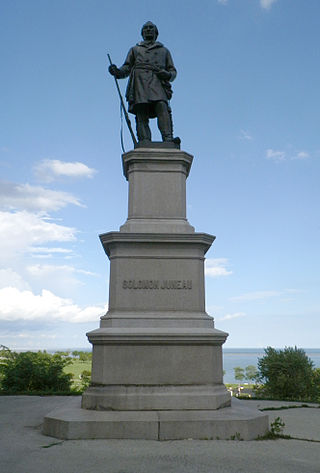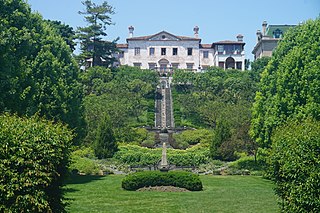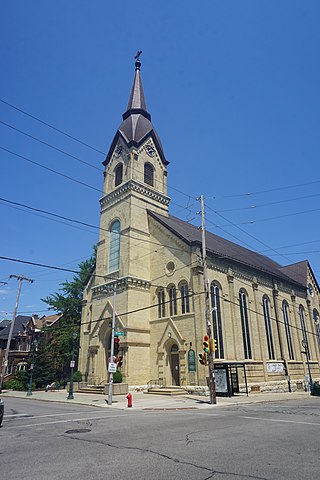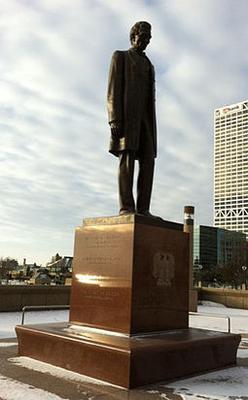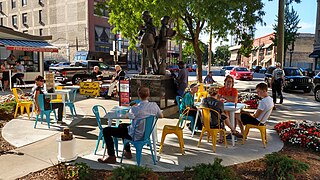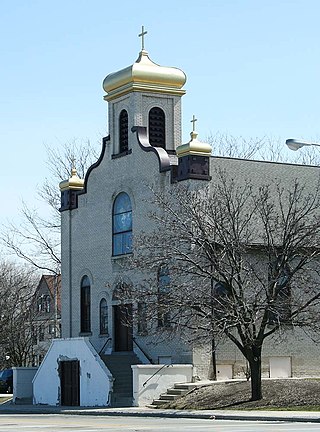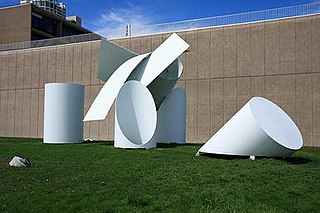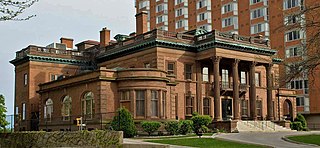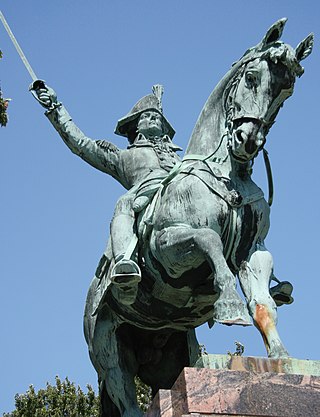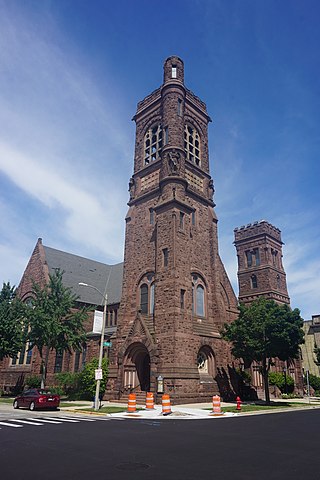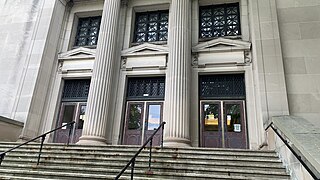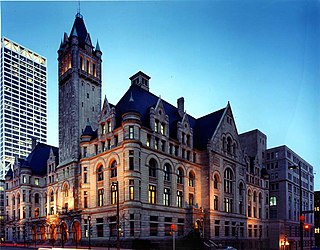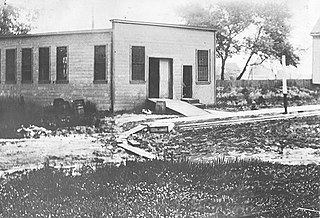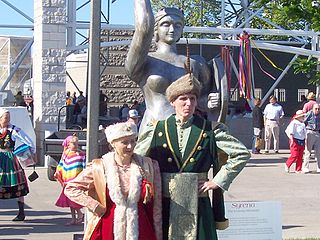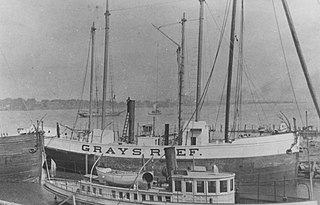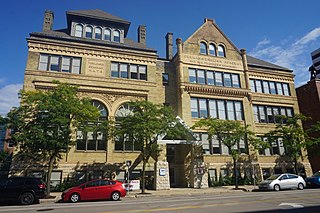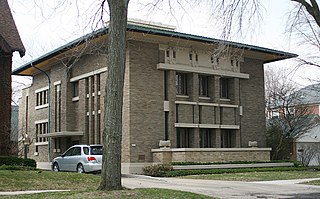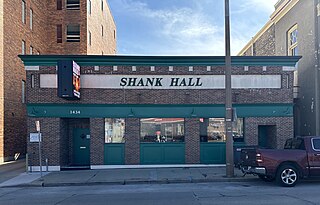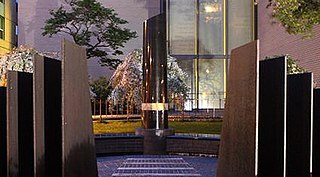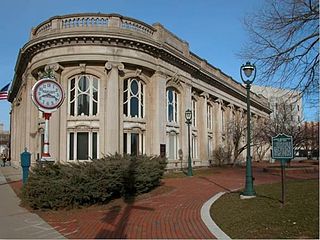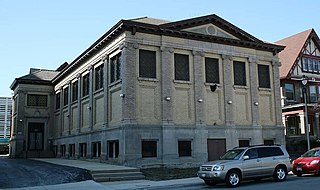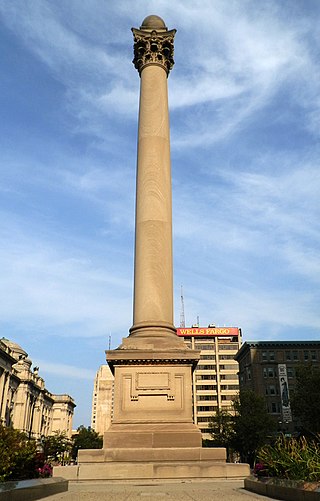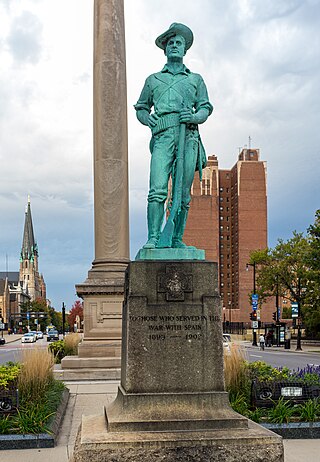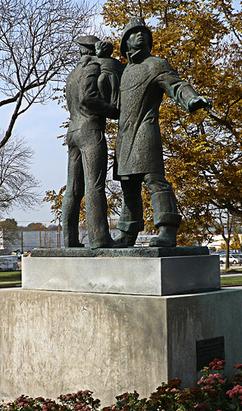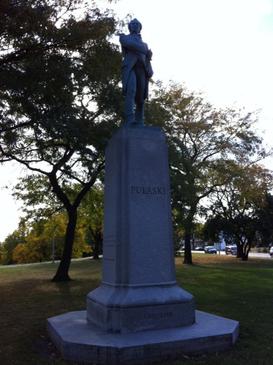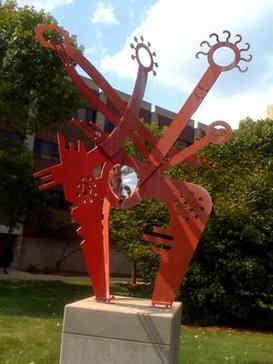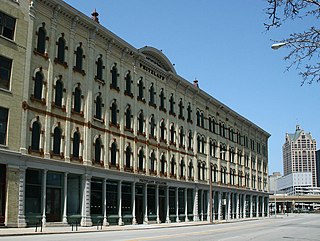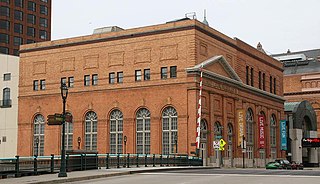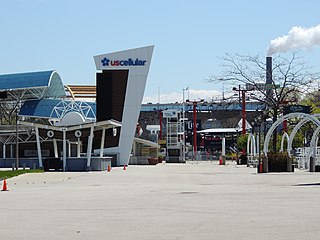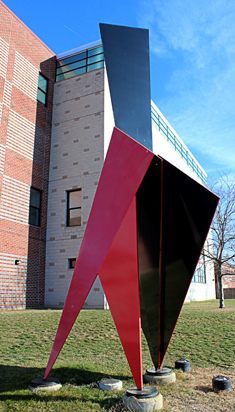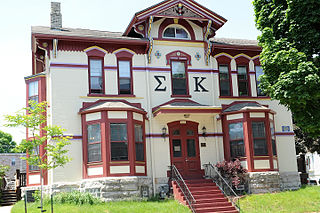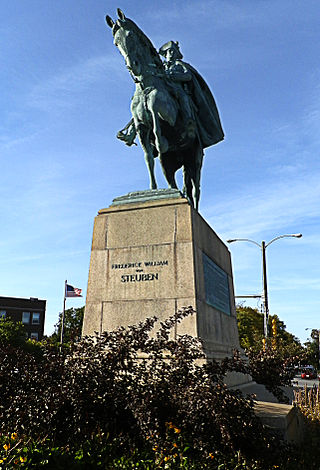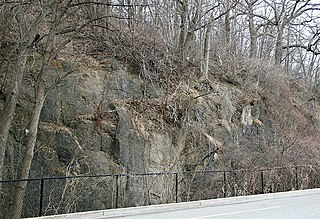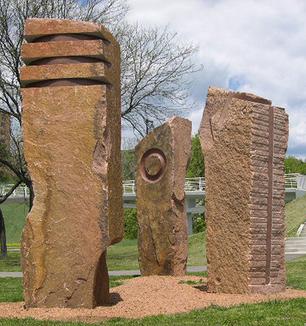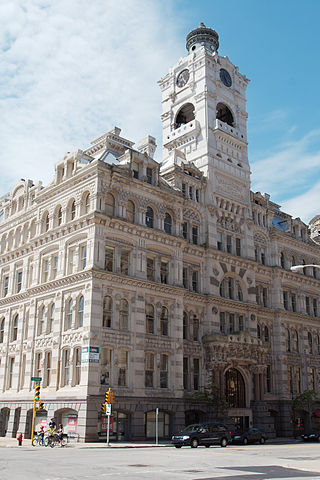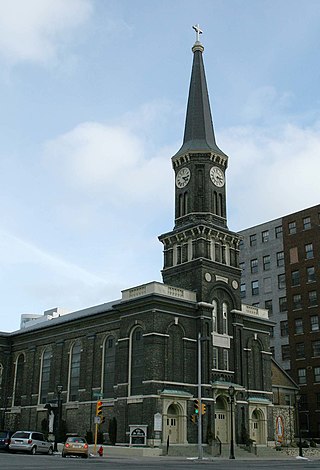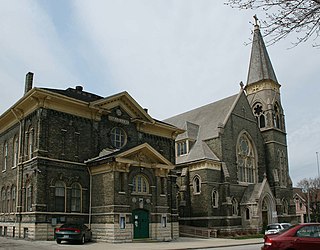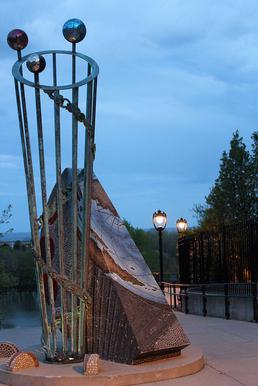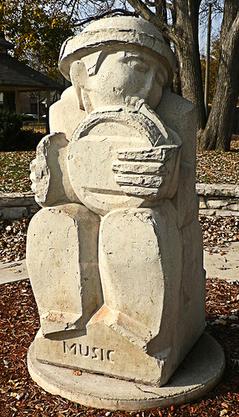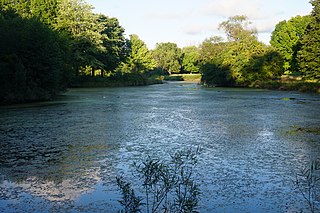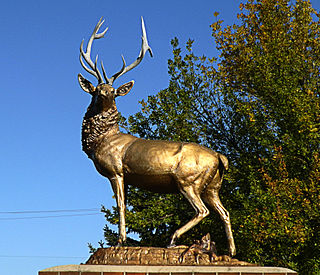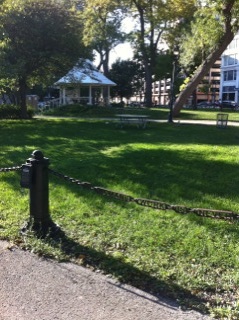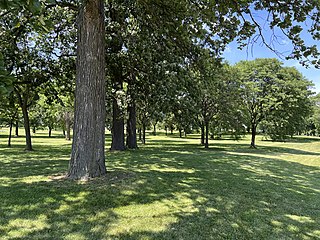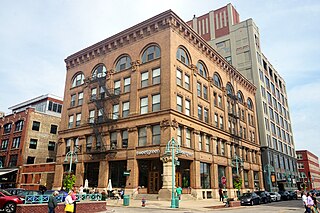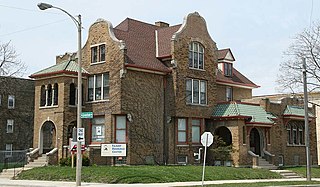100 Sights in Milwaukee, United States (with Map and Images)
Legend
Welcome to your journey through the most beautiful sights in Milwaukee, United States! Whether you want to discover the city's historical treasures or experience its modern highlights, you'll find everything your heart desires here. Be inspired by our selection and plan your unforgettable adventure in Milwaukee. Dive into the diversity of this fascinating city and discover everything it has to offer.
Sightseeing Tours in MilwaukeeActivities in Milwaukee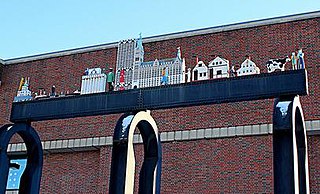
Milwaukee is a public artwork by Cleveland, Ohio artist George Mossman Greenamyer, located at the University of Wisconsin–Milwaukee; Golda Meir Library, Milwaukee, Wisconsin, United States of America.

The Milwaukee Public Museum (MPM) is a natural and human history museum in downtown Milwaukee, Wisconsin. The museum was chartered in 1882 and opened to the public in 1884; it is a nonprofit organization operated by the Milwaukee Public Museum, Inc. MPM has three floors of exhibits and the first Dome Theater in Wisconsin.
Family is a public artwork by American artist Helaine Blumenfeld located on the Henry Reuss Federal Plaza, which is in downtown Milwaukee, Wisconsin, United States. The sculpture is made from Norwegian blue granite. It consists of five forms, with the largest form measuring approximately 89 x 58 x 27 inches. Family was installed in the Henry Reuss Federal Plaza in 1983.
The Milwaukee County War Memorial is a memorial building located on Lake Michigan in Milwaukee, WI. It was designed by architect Eero Saarinen. Construction began in 1955 and the building was dedicated on Veterans Day in 1957.
The Grohmann Museum, at the Milwaukee School of Engineering, houses an art collection dedicated to the evolution of human work. The museum opened on October 27, 2007 and is located at 1000 N. Broadway, Milwaukee, Wisconsin, United States. It is next to the German-English Academy Building.
The Pabst Theater is an indoor performance and concert venue and landmark of Milwaukee, Wisconsin, United States. Colloquially known as "the Pabst", the theater hosts about 100 events per year. Built in 1895, it is the fourth-oldest continuously operating theater in the United States, and has presented such notables as pianist Sergei Rachmaninoff, actor Laurence Olivier, and ballerina Anna Pavlova, as well as various current big-name musical acts.
Bridge is a public art work by artist Peter Flanary. It is located on the Hank Aaron State Trail in the Menomonee Valley south of downtown Milwaukee, Wisconsin. The sculpture was donated to the State of Wisconsin by the nonprofit Menomonee Valley Partners. The sculpture is located in Three Bridges Park near the bridge from Mitchell Park.
The Riverside Theater is a concert hall located in Milwaukee, Wisconsin. The venue seats 2,480 people and hosts many different musicians, comedians, shows, and events. It is leased by the Pabst Theater Foundation.
9. Summerfest

Summerfest is an annual music festival held in downtown Milwaukee, Wisconsin. First held in 1968, Summerfest is located at Henry Maier Festival Park, adjacent to Lake Michigan and Milwaukee's central business district. Summerfest attracts approximately 800,000 people each year, promoting itself as "The World's Largest Music Festival", a title certified by Guinness World Records in 1999, but has been surpassed in attendance by Donauinselfest with over three million in 2015. While Summerfest has one of the highest aggregate attendances in the world, the daily attendance of Summerfest is lower than other major American music festivals. In 2022, the daily attendance of Summerfest was 49,500.
10. Milwaukee County Zoo
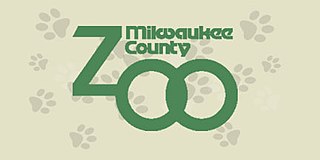
The Milwaukee County Zoo is a zoo in Milwaukee, Wisconsin, operated by the Milwaukee County Parks Commission and is accredited by the Association of Zoos and Aquariums. The zoo averages about 1.3 million visitors a year. The zoo houses 3,100 animals from 350 species and covers an area of 190 acres (77 ha). The zoo is noted for the second birth of polar bears and siamangs in captivity and for their locally famous gorilla Samson, who lived from 1950 to 1981 and whose bones are now on display at the Milwaukee Public Museum. During World War II, a celebrity animal of the zoo was Gertie the Duck and her ducklings. The zoo is also home to one of the largest group of bonobos in one location outside their native Democratic Republic of the Congo, and has two cheetahs from the National Zoo in Washington, DC.
11. Milwaukee City Hall
The Milwaukee City Hall is a skyscraper and town hall located in Milwaukee, Wisconsin, United States. It was finished in 1895, and was Milwaukee's tallest building until completion of the First Wisconsin Center in 1973. In 1973 it was listed on the National Register of Historic Places.
Wikipedia: Milwaukee City Hall (EN), Website, Heritage Website
12. America’s Black Holocaust Museum
America's Black Holocaust Museum (ABHM) is dedicated to the history of the Black Holocaust in America. The museum was founded in 1988 by James Cameron, who became well known after surviving a lynching.
Wikipedia: America's Black Holocaust Museum (EN), Website, Website
13. Mitchell Park Horticultural Conservatory
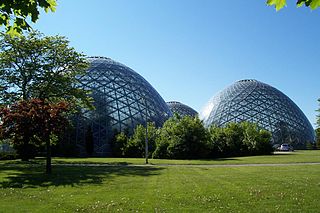
Mitchell Park Horticultural Conservatory is a conservatory located at Mitchell Park in Milwaukee, Wisconsin, United States. It is owned and operated by the Milwaukee County Park System, and replaced the original Milwaukee Conservatory which stood from 1898 to 1955. The three domes display a large variety of plant life.
Wikipedia: Mitchell Park Horticultural Conservatory (EN), Facebook, Tripadvisor, Website, Yelp, Foursquare
14. Miller High Life Theatre
Miller High Life Theatre is a theatre located in Milwaukee, Wisconsin. The building was extensively renovated between 2001 and 2003, at which point its name changed to the Milwaukee Theatre. A naming rights deal changed its name in 2017 to the Miller High Life Theatre. It seats 4,086 people and can be configured into a more intimate venue that seats 2,500. It is located at 500 W. Kilbourn Avenue in downtown Milwaukee.
15. Milwaukee Breakwater Lighthouse
The Milwaukee Breakwater lighthouse was built in 1926 in the harbor of Milwaukee in Milwaukee County, Wisconsin to mark the entrance to the harbor. One of the last fully enclosed breakwater lighthouses in the Great Lakes, the structure was placed on the National Register of Historic Places in 2011.
Wikipedia: Milwaukee Breakwater Light (EN), Website, Heritage Website
16. Basilica of Saint Josaphat
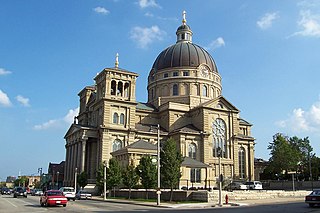
The Basilica of St. Josaphat, located in the Lincoln Village neighborhood of Milwaukee, Wisconsin, United States, in the Archdiocese of Milwaukee, is one of 82 American minor basilicas. In its grandeur and opulence it is an excellent example of the so-called Polish cathedral style of church architecture found in the Great Lakes region of North America. Modeled after St. Peter's Basilica in Rome, it features one of the largest copper domes in the world. It is listed on the National Register of Historic Places and is a designated Milwaukee Landmark.
Wikipedia: Basilica of St. Josaphat (EN), Website, Heritage Website
17. Historic Third Ward District
The Historic Third Ward is a historic warehouse district located in downtown Milwaukee, Wisconsin. This Milwaukee neighborhood is listed on the National Register of Historic Places. Today, the Third Ward is home to over 450 businesses and maintains a strong position within the retail and professional service community in Milwaukee as a showcase of a mixed-use district. The neighborhood's renaissance is anchored by many specialty shops, restaurants, art galleries and theatre groups, creative businesses and condos. It is home to the Milwaukee Institute of Art and Design (MIAD), and the Broadway Theatre Center. The Ward is adjacent to the Henry Maier Festival Park, home to Summerfest. The neighborhood is bounded by the Milwaukee River to the west and south, E. Clybourn Street to the north, and Lake Michigan to the east.
Wikipedia: Historic Third Ward (Milwaukee) (EN), Heritage Website
18. Saint John's Lutheran Church
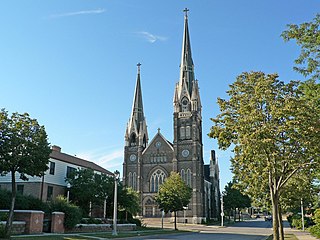
St. John's Evangelical Lutheran Church is a Gothic Revival-styled church built in 1889 in Milwaukee, Wisconsin by a congregation with German roots. In 1992, the church and associated buildings were listed on the National Register of Historic Places. It is also designated a Milwaukee Landmark.
Wikipedia: Saint John's Evangelical Lutheran Church (Milwaukee, Wisconsin) (EN)
19. Saint Joan of Arc Chapel
St. Joan of Arc Chapel is a Roman Catholic chapel today located in Milwaukee, Wisconsin, United States, on the campus of Marquette University, in the Archdiocese of Milwaukee. It was dedicated to Joan of Arc on 26 May 1966, after it had been moved from its previous location on Long Island, New York. It was originally built in the Rhône River Valley in France.
20. St. Peter's Evangelical Lutheran Church
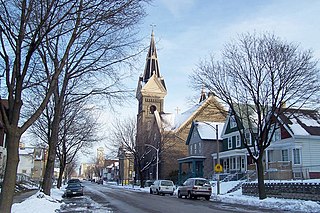
St. Peter's Evangelical Lutheran Church, or Iglesia Luterana San Pedro, is a historic church complex located in the Walker's Point neighborhood of Milwaukee, Wisconsin. Its buildings are listed on the National Register of Historic Places.
Wikipedia: St. Peter's Evangelical Lutheran Church (Milwaukee, Wisconsin) (EN), Website, Heritage Website
21. Golda Meir Lower Campus
The Golda Meir School for gifted and talented students is a Milwaukee Public Schools district elementary, middle, and high school in Milwaukee, Wisconsin. The school offers classes for students in grades three through twelve.
22. Saint Stanislaus Catholic Church
St. Stanislaus Roman Catholic Oratory is a Roman Catholic parish in the historic Mitchell Street District of Milwaukee, Wisconsin. It was designed by Polish nobleman Leonard Kowalski, one of Milwaukee's early Polish residents, who took the name Leonard Schmidtner and spoke German.
Wikipedia: St. Stanislaus Catholic Church (Milwaukee) (EN), Website
23. German Fest
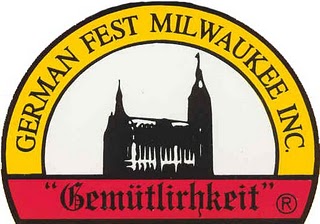
German Fest is an ethnic festival in Milwaukee, Wisconsin, US at the Henry Maier Festival Park, on the Lake Michigan lakefront. The genesis of German Fest occurred when Mayor Henry Maier challenged the local German-American community during a speech on May 20, 1980, at the 20th anniversary of the German American National Congress (DANK) to organize a German festival. Shortly thereafter, Walter Geissler, then President of D.A.N.K., chaired a committee of five members that laid the foundation for the Fest. The charter of German Fest was subsequently written in January 1981. The first German Fest was held in August 1981. It is billed as the "Largest German celebration in North America" and "A Milwaukee Tradition". It currently occurs during the last full weekend in July. As of 1993, 52% of Milwaukee's population claimed German descent, which is the largest European percentage in a major U.S. metropolitan area.
24. Church of the Gesu
Gesu Church is a Jesuit parish of the Roman Catholic Archdiocese of Milwaukee located in Milwaukee, Wisconsin. It is listed on the National Register of Historic Places and was designated a Milwaukee Landmark in 1975.
Wikipedia: Gesu Church (Milwaukee, Wisconsin) (EN), Website, Heritage Website
25. Walk of Fame
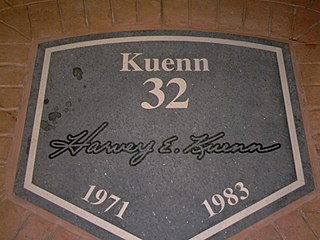
The American Family Field Walk of Fame is an exhibit located at American Family Field in Milwaukee, Wisconsin, that commemorates baseball players, coaches, executives, and broadcasters who have made significant contributions to Major League Baseball (MLB) in Milwaukee. Established by the Milwaukee Brewers in 2001 with the opening of the stadium, it encompasses the entire history of the Brewers since 1970 and that of the Milwaukee Braves, who played in the city from 1953 to 1965. Twenty-three individuals have been inducted as of 2024.
26. SafeHouse
The SafeHouse is an American theme-restaurant that was established in 1966 in Milwaukee, Wisconsin. Filled wall-to-wall with spy memorabilia collected by the founder/owner, David J. Baldwin. It has been used as a backdrop in movies shot in Milwaukee such as Major League, and has been featured on the History Channel as one of the best secret locations to visit in the United States. The restaurant has been in featured articles in Time, People, and the Daily Express for its food, spy-themed drinks and espionage theme. Its mascot is Yugyps.
27. Trinity Evangelical Lutheran Church - Missouri Synod
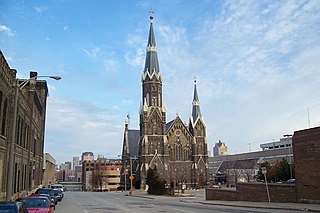
Trinity Evangelical Lutheran Church is a Victorian Gothic-style Lutheran church built in Milwaukee, Wisconsin in 1878 - then claimed to be "the finest church edifice within the Missouri Synod." Today it is listed on the National Register of Historic Places and is a designated State Historic Site. The building was also declared a Milwaukee Landmark in 1967, and today is the oldest church associated with the Lutheran Church–Missouri Synod in the city.
Wikipedia: Trinity Evangelical Lutheran Church (EN), Website, Heritage Website
28. Milwaukee Irish Fest
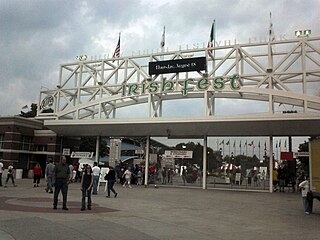
Milwaukee Irish Fest is a yearly Irish-American festival held at the Henry Maier Festival Park, on Lake Michigan, United States, every third weekend in August. Over 130,000 people attend the Fest each year to watch nearly 250 acts on 17 stages. The four-day festival started in 1981, founded by Edward J. Ward. Irish Fest is the largest of the ethnic festivals held at the Summerfest grounds which report attendance, and holds claim to the largest celebration of Irish Culture in the world.
29. Milwaukee County Courthouse
The Milwaukee County Courthouse is a high-rise municipal building located in downtown Milwaukee, Wisconsin. Completed in 1931, it is the third county courthouse to be built in the city and is listed on the National Register of Historic Places. The first two courthouses were built at what is now Cathedral Square Park on the east side of the Milwaukee River.
Wikipedia: Milwaukee County Courthouse (EN), Heritage Website
30. Lapham Memorial
The Lapham Memorial is a public artwork by American artist Albert H. Atkins, located near the entrance to Lapham Hall, on the University of Wisconsin–Milwaukee campus. It is in memory of Increase A. Lapham, a 19th-century scientist famous for prompting the creation of the National Weather Service and recording the antiquities of Wisconsin, among other accomplishments.
31. Pabst Brewing Company Complex
The Pabst Brewery Complex, on a hill northwest of the downtown of Milwaukee, Wisconsin, is the former brewery of the Pabst Brewing Company, where the company innovated to improve their beer and increase production until in 1892 it was the largest brewer of lager in the world. In 2003 the complex was listed on the National Register of Historic Places.
32. Captain Frederick Pabst Mansion
The Pabst Mansion is a grand Flemish Renaissance Revival-styled house built in 1892 in Milwaukee, Wisconsin, USA for Captain Frederick Pabst (1836–1904), founder of the Pabst Brewing Company. In 1975 it was placed on the National Register of Historic Places, and is now a historic house museum, offering tours to the public.
33. Sam & Helen Stahl Center for Jewish Studies
The Thomas A. Greene Memorial Museum, also known as Greene Geological Museum or Greene Museum, is a mineral and fossil museum in Milwaukee, Wisconsin, administered by the Department of Geosciences at the University of Wisconsin–Milwaukee.
Wikipedia: Thomas A. Greene Memorial Museum (EN), Heritage Website
34. Solomon Juneau Monument
The Juneau Monument is a public artwork by American artist Richard Henry Park located on the grounds of Juneau Park, which is in Milwaukee, Wisconsin. The base of the statue is made of limestone. On top of the base is a bronze statue of Solomon Juneau. On each side of the base are bronze reliefs. The statue is 5 feet (1.5 m) wide by 15 feet (4.6 m) high.
35. Haggerty Museum of Art
The Patrick and Beatrice Haggerty Museum of Art, sometimes referred to simply as "the Haggerty", is located at 13th and Clybourn Streets on the campus of Marquette University in downtown Milwaukee, Wisconsin, United States. The museum opened in 1984 following a university collaborative effort that was chaired by professor Curtis L. Carter. The construction site was decorated by a mural called Construction Fence by American artist and social activist, Keith Haring. The Director of the Haggerty Museum of Art is John McKinnon.
Wikipedia: Patrick and Beatrice Haggerty Museum of Art (EN), Website
36. Leif, the Discoverer
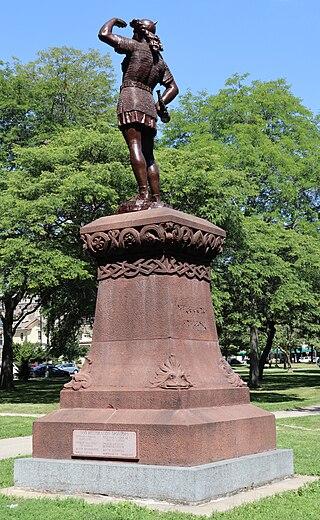
Leif, the Discoverer is a bronze sculpture of Leif Ericson created by American sculptor Anne Whitney. The statue was erected on November 15, 1887 in Juneau Park in Milwaukee, Wisconsin, United States.
37. Tripoli Shrine Center
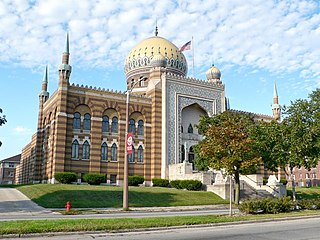
The Tripoli Shrine Temple is a Shriners temple built 1926-28 in the Concordia neighborhood of Milwaukee, Wisconsin. The building's design incorporates Moorish and Indian elements, somewhat resembling the Taj Mahal in India, and is listed on the National Register of Historic Places as Tripoli Temple. It is not a religious building.
Wikipedia: Tripoli Shrine Temple (EN), Website, Facebook, Heritage Website
38. Goethe-Schiller Monument
The Goethe–Schiller Monument is a public artwork by German artist Ernst Friedrich August Rietschel located in Washington Park, which is in Milwaukee, Wisconsin, United States. The bronze sculpture from 1908 depicts two men, Johann Wolfgang von Goethe and Friedrich von Schiller, one holding a laurel wreath and the other a scroll. The 12 foot artwork rests upon a 26 foot long granite base. The bronze sculpture is a recasting of the statue incorporated into the 1857 Goethe-Schiller Monument in Weimar, Germany.
39. North Point Lighthouse
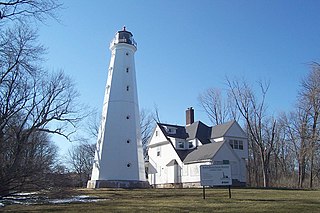
The North Point Lighthouse Museum is a lighthouse built in 1888 in Lake Park on the East Side of Milwaukee in Milwaukee County, Wisconsin, United States to mark the entrance to the Milwaukee River. The lighthouse was added to the National Register of Historic Places in 1984. It was also added to the Library of Congress Historic American Buildings Survey as survey HABS WI-358.
Wikipedia: North Point Light (EN), Website, Heritage Website
40. Villa Terrace Decorative Arts Museum
Villa Terrace is a historic house in Milwaukee, Wisconsin. It was built in 1924 for the Lloyd R. Smith family - an Italian Renaissance-style home on a bluff above Lake Michigan. Since 1966 the house and grounds have housed the Villa Terrace Decorative Arts Museum. It is listed on the National Register of Historic Places as Lloyd R. Smith House.
Wikipedia: Villa Terrace Decorative Arts Museum (EN), Website
41. Saint Hedwig Catholic Church
St. Hedwig's Roman Catholic Church, is a church and former parish of the Roman Catholic located at 1702 N. Humboldt Ave. on Milwaukee, Wisconsin's East Side at the center of the East Brady Street Historic District, in the Roman Catholic Archdiocese of Milwaukee.
42. Christ Evangelical Lutheran Church
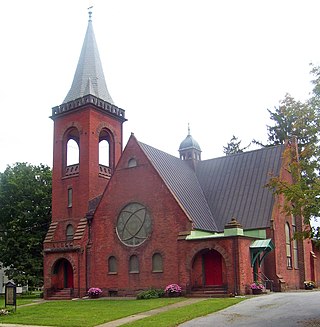
Christ Evangelical Lutheran Church is a historic church built in 1901 by a German Lutheran congregation southwest of the Walker's Point neighborhood of Milwaukee, Wisconsin. It is listed on the National Register of Historic Places.
Wikipedia: Christ Evangelical Lutheran Church (EN), Website, Heritage Website
43. Abraham Lincoln
A statue of Abraham Lincoln by American artist Gaetano Cecere is installed along Lincoln Memorial Drive in Milwaukee, Wisconsin, United States. The 10'6" bronze sculpture depicts a young beardless Abraham Lincoln. The former president stands looking down with both hands at his sides.
44. Letter Carriers' Monument
The Letter Carriers' Monument is a piece of public art by American artist Elliot Offner, located on a triangular plot formed by North 2nd Street, North Plankinton Avenue and West Wells Street in downtown Milwaukee, Wisconsin, in the United States. Created in 1989, the monument depicts three letter carriers and was commissioned in celebration of the centennial of the National Association of Letter Carriers (NALC).
45. St. George Melkite-Greek Catholic Church
St. George Melkite Catholic Church is a Melkite Greek Catholic Church, located in Milwaukee, Wisconsin. It was added to the National Register of Historic Places in 1986. The church was built in 1917 to serve the needs of the Syrian-Lebanese community who migrated to Milwaukee after the Chicago World's Fair of 1892. It is the second oldest Melkite church in the United States.
Wikipedia: St. George Melkite Catholic Church (EN), Website, Heritage Website
46. Argo
Argo is a public artwork by Russian-American artist Alexander Liberman located on the south lawn of the Milwaukee Art Museum, which is in Milwaukee, Wisconsin, U.S.. The artwork was made in 1974 from steel cylinders painted with a reflective white epoxy finish. It measures 15 feet (4.6 m) high by 31 feet (9.4 m) wide.
47. Wisconsin Conservatory of Music
The Wisconsin Conservatory of Music is an independent music school in Milwaukee, Wisconsin. It teaches classical, jazz, rock, folk, and blues and hosts musical concerts throughout the year. It is housed in a Neoclassical-style mansion built in 1904 for Charles L. McIntosh, treasurer of J.I. Case. In 2000 the building was listed on the National Register of Historic Places.
Wikipedia: Wisconsin Conservatory of Music (EN), Website, Heritage Website
48. Gertie the Duck
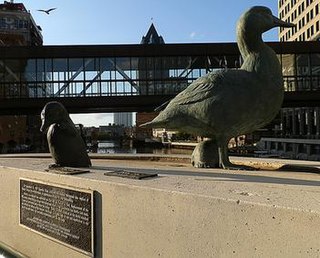
Gertie the Duck is an icon of Milwaukee, Wisconsin history and the subject of a 4-foot-tall (1.2 m) bronze sculpture by American artist Gwendolyn Gillen. It was installed on the Wisconsin Avenue bridge in September 1997.
49. Kosciuszko Monument
An equestrian statue of Tadeusz Kościuszko by the Italian and American artist Gaetano Trentanove is located on the south side of Milwaukee, Wisconsin, in the United States. The bronze equestrian sculpture portrays Kościuszko in his military uniform and hat. It is located at South 9th Place and West Lincoln Avenue in Kosciuszko Park. The statue was placed in October 1904 but was not officially unveiled until June 18, 1905 with a speech by Archbishop F. Symon from Rome. The statue was moved to its present location in 1951 and a celebratory unveiling was held on September 15 of that year.
Wikipedia: Equestrian statue of Tadeusz Kościuszko (Milwaukee) (EN)
50. The Calling
The Calling is a public artwork by American artist Mark di Suvero located in O'Donnell Park, which is on the lakefront in Milwaukee, Wisconsin, United States. The artwork was made in 1981-82 from steel I-beams painted an orange-red color. It measures 40 ft (12 m) in height, and it sits at the end of Wisconsin Avenue in front of the footbridge that leads to the Milwaukee Art Museum.
51. Engine Company No. 10
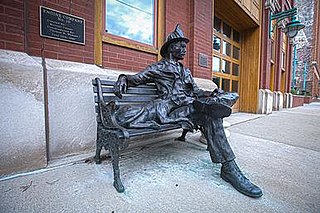
Engine Company No. 10, is a public artwork by artist Michael Casper, commissioned by Thomas M. Wamser located in the Historic Third Ward on Broadway Street, in Milwaukee, Wisconsin, United States. The structure is made out of bronze and was installed in 1990.
52. Saint Paul's Episcopal Church
St. Paul's Episcopal Church is a Richardsonian Romanesque-styled church built in 1882 in Milwaukee, Wisconsin in the Episcopal Diocese of Milwaukee. Noted for its Tiffany windows, it is listed on the National Register of Historic Places and is a designated Milwaukee Landmark.
Wikipedia: St. Paul's Episcopal Church (Milwaukee, Wisconsin) (EN), Website, Heritage Website
53. Helene Zelazo Center for the Performing Arts
The Helene Zelazo Center for the Performing Arts is a performing arts center located on the campus of the University of Wisconsin–Milwaukee. It houses the 756-seat Helen Bader Concert Hall, large rehearsal spaces, meeting facilities, music offices, and dance studios for the UWM Peck School of the Arts. The Zelazo Center is one of many facilities maintained by the Peck School of the Arts, including the Fine Arts Building, as well as Kenilworth Square East.
Wikipedia: Helene Zelazo Center for the Performing Arts (EN)
54. Dr. Martin Luther King Jr.
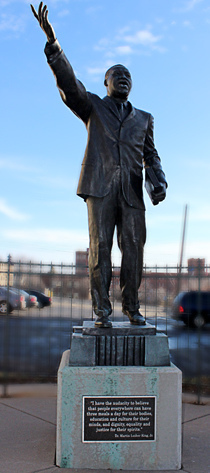
Dr. Martin Luther King Jr. is a 1998 public art work designed by American artist Erik Blome, located in downtown Milwaukee, Wisconsin. The bronze sculpture depicts the civil rights movement leader Martin Luther King Jr. standing on a pedestal of books. It was commissioned by the YWCA of Greater Milwaukee and is located in front of the King Heights apartments.
Wikipedia: Statue of Martin Luther King Jr. (Milwaukee) (EN)
55. Federal Building & U.S. Courthouse
The U.S. Courthouse & Federal Office Building, Milwaukee, Wisconsin is a post office, Federal office, and courthouse building located at Milwaukee in Milwaukee County, Wisconsin. It is a courthouse for the United States District Court for the Eastern District of Wisconsin.
Wikipedia: Federal Building (Milwaukee, Wisconsin) (EN), Heritage Website
56. Harley-Davidson Corporate Headquarters
The Harley-Davidson Motorcycle Factory Building was the original Harley-Davidson motorcycle factory constructed in Milwaukee, Wisconsin, in 1906. The factory was located at what is now 3700 W. Juneau and it was regularly expanded with additions in the early 1900s. It was added to National Register of Historic Places on November 9, 1994.
Wikipedia: Harley-Davidson Motorcycle Factory Building (EN), Ref Nrhp, Heritage Website
57. Polish Fest
Polish Fest is an annual ethnic festival held at the Henry Maier Festival Park in Milwaukee, Wisconsin, and was established in 1982. One of the largest Polish festivals in the United States, it attracts Polish Americans from all over Wisconsin and nearby Chicago, who come to celebrate Polish culture through music, food and entertainment.
58. Light Vessel No.57
Light Vessel No.57 was an American lightvessel that was built in 1891 and served on the Great Lakes, west of the Straits of Mackinac, from her construction to her retirement in 1924. She was partly dismantled, used as a clubhouse, and wrecked by a storm at some time after 1928. On December 16, 1996 the remains of Light Vessel No.57 were listed on the National Register of Historic Places.
59. German-English Academy Building
The German-English Academy Building is a school built in Milwaukee, Wisconsin in 1891 for the German-English Academy, which later became the University School of Milwaukee. The building is listed on the National Register of Historic Places and is now owned by the Milwaukee School of Engineering. Since 2012, it has been leased to the company Direct Supply as a technology center. It is beside the Grohmann Museum.
Wikipedia: German-English Academy Building (EN), Heritage Website
60. Frederick C. Bogk House
The Frederick C. Bogk House is a single-family residential project in Milwaukee, Wisconsin designed by Frank Lloyd Wright. Bogk was an alderman and secretary-treasurer of the Ricketson Paint Works. This house embodies Wright's prairie style elements into a solid-looking structure that appears impregnable.
61. Immigrant Mother
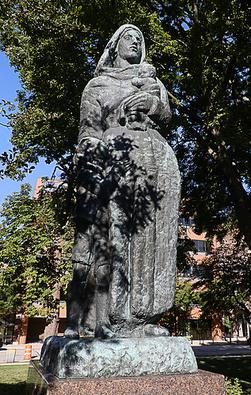
Immigrant Mother is a public artwork by Croatian artist Ivan Meštrović located in Cathedral Square Park in Milwaukee, Wisconsin, United States. The bronze sculpture sits on a red granite base and depicts a mother with her children.
62. Pryor Avenue Iron Well
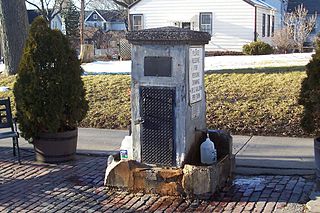
The Pryor Avenue Iron Well, or Iron Well, is an early artesian water well located in the Bay View Historic District of Milwaukee, Wisconsin. It was built in 1882 and named for its high iron content. Originally water naturally flowed from the pressurized aquifer below. The original hand pump is now replaced with an electric pump. It was designated a Milwaukee landmark in 1980 for its significance as the last remaining public well in the city.
63. Shank Hall
Shank Hall is a music venue with a 300-person capacity located in Milwaukee, Wisconsin, United States. It began as a garage in c.1930 to store and repair motor vehicles, and in the 1940s the building was a record distribution center. Later, it became a concert venue called The Barn, and in the 1970s, it was called Teddy's. In 1989, it became Shank Hall and was named after a fictional club in the movie This Is Spinal Tap.
64. Holocaust Memorial
Holocaust Memorial is a public artwork by American artist Claire Lieberman located on the Jewish Museum Milwaukee lawn, which is near downtown Milwaukee, Wisconsin, United States. It is located at 1360 North Prospect Ave. This piece is 10 ft x 24 ft x 20 ft. The materials used are Corten steel, black granite, and brick. The Holocaust Memorial was created in 1983.
65. Teamwork

Teamwork is a public sculpture by Omri Amrany located at American Family Field west of downtown Milwaukee, Wisconsin. Teamwork is cast in bronze and honors Jeffrey Wischer, William DeGrave, and Jerome Starr, the three Iron Workers Local 8 members killed by the Big Blue Crane collapse during the construction of the new baseball stadium. The sculpture was commissioned by the Habush, Habush and Rottier Charitable Foundation for $250,000.
66. A Place to Sit
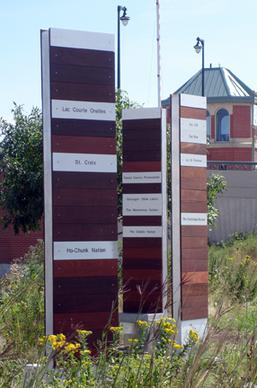
A Place to Sit is a public artwork by American artist Kathryn E. Martin, located along the Art Look of the Hank Aaron State Trail, situated on the south side of the Menomonee River, in the city of Milwaukee, Milwaukee County, Wisconsin. The work was dedicated on October 8, 2009.
67. Milwaukee County Historical Center
The Milwaukee County Historical Society, also known as MCHS, is a local historical society in Milwaukee County, Wisconsin. Founded in 1935, the organization was formed to preserve, collect, recognize, and make available materials related to Milwaukee County history. It is located in downtown Milwaukee in the former Second Ward Savings Bank building.
Wikipedia: Milwaukee County Historical Society (EN), Website, Heritage Website
68. Kilbourn Masonic Temple
The Kilbourn Masonic Temple is a historic Masonic building located in Milwaukee, Wisconsin. It was constructed in 1911 as a meeting hall for Kilbourn Lodge #3, a local Masonic lodge which was one of the first three organized in Wisconsin in 1843. The Masons no longer meet in the building). It was listed on the National Register of Historic Places in 1986. When it celebrated its 100th anniversary in 2011, the temple was automatically deemed a landmark in the city of Milwaukee. The temple used to serve as a fraternity house for the Kappa Sigma chapter at Marquette University but is now rented as living space for residents/students.
69. Christian Wahl
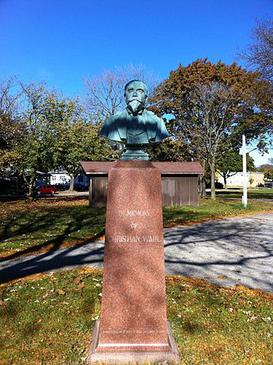
Christian Wahl is a public artwork by Italian artist Gaetano Trentanove located in Lake Park, which is in Milwaukee, Wisconsin, United States. The bronze bust of Milwaukee businessman Christian Wahl was created in 1903, and is set atop a red granite pedestal. Altogether it measures 8 feet in height.
70. The Midsummer Carnival Shaft
Midsummer Carnival Shaft is a public artwork by American architect Alfred C. Clas in the Court of Honor, in downtown Milwaukee, Wisconsin, United States. It is on Wisconsin Avenue, between N. 8th and N. 11th Streets.
71. Spanish-American War Soldier
Spanish–American War Soldier is a public art work created by the American Bronze Company and located in downtown Milwaukee, Wisconsin. The bronze figure depicts a uniformed soldier with an ammunition belt around his waist and a rifle in hand.
72. On Watch
On Watch is a public artwork by American artist David M. Wanner located at the Fire and Police Safety Academy, which is in Milwaukee, Wisconsin, United States. The life-size bronze sculpture depicts a police officer and a fire fighter both holding a rescued child.
73. Count Casimir Pulaski
Count Casimir Pulaski is a public artwork by American artist Joseph Kiselewski located in Pulaski Park, which is in Milwaukee, Wisconsin, United States. The bronze statue is a 6-foot, full-length portrait of Count Casimir Pulaski standing atop a 17-foot granite pedestal.
74. World War I Memorial Flagpole
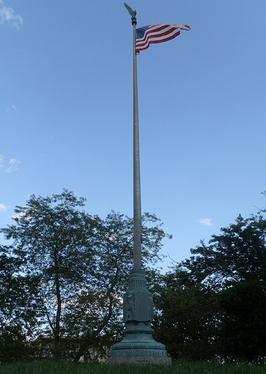
World War I Memorial Flagpole (Eagle) is a public artwork by American artist Benjamin Franklin Hawkins located on the lakefront in Milwaukee, Wisconsin, United States. The artwork was made in 1932 from bronze and granite. It measures approximately 80 inches in height, and it sits at the Northeast corner of North Prospect Avenue and Lincoln Memorial Drive.
75. Three Bronze Discs
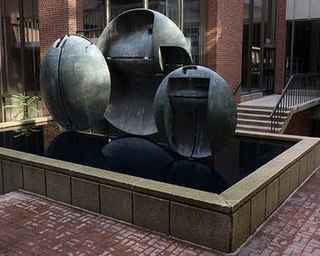
Three Bronze Discs is a piece of public artwork by American artist James Wines located in the courtyard of the Golda Meir Library, near Milwaukee, Wisconsin, United States. Made of bronze, the sculpture is three circular bronze discs located in a pool of water. It is 10 feet by 8 feet and 5 feet in diameter.
76. Happy-Go-Luckies of Nature and Technology
Happy-Go-Luckies of Nature and Technology is a public artwork by German artist Guido Brink located on the University of Wisconsin–Milwaukee campus, which is near Milwaukee, Wisconsin, United States. The sculpture is a steel structure that is painted red. It was dedicated at UWM's Lapham Hall on October 23, 1992.
77. Chrysalis
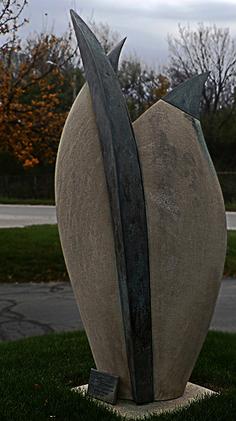
Chrysalis is a public artwork by American artist Beth Sahagian located at the entrance of the Marion Chester Read Center, which is near Wauwatosa, Wisconsin, United States. The sculpture is carved from 2,500 pounds of Indiana limestone and bronze. It consists of one solid form and measures about 75" x 36". Chrysalis was installed in the entrance of the Marion Chester Read Center in October 1990.
78. Pritzlaff Building
The John Pritzlaff Hardware Company is a complex of Italianate-styled buildings built from 1875 to 1919, a remnant of what was for years the largest wholesale hardware business in Milwaukee and the region. In 2013 the buildings were listed on the National Register of Historic Places.
Wikipedia: John Pritzlaff Hardware Company (EN), Website, Heritage Website
79. Patty & Jay Baker Theater Complex
Oneida Street Station, also known as the East Wells Power Plant, was a power plant operated by The Milwaukee Electric Railway & Light Company. Constructed from 1898 to 1900, it was designed by architect Herman Esser in neoclassical revival style. The building is located in downtown Milwaukee, Wisconsin, at the Milwaukee River and Wells Street, which was once known as Oneida Street. The company began operating electric street cars in 1890. Their expanding network of streetcar and interurban railway lines were powered by several of their own power plants. As the company generated more power than they used, they sold the excess electricity, and, as Wisconsin Energy Corporation, eventually became the major supplier of power to eastern Wisconsin. The American Society of Mechanical Engineers (ASME) describes the plant as the "first central power station in the United States to be equipped and successfully operated with pulverized coal."
80. Festa Italiana
Henry Maier Festival Park is a 75-acre festival park located in Milwaukee, Wisconsin on the shore Lake Michigan and is the site of the annual Summerfest musical festival and the home of the American Family Insurance Amphitheater.
81. Celebrating the Arts
Celebrating the Arts is a public artwork by Indian artist Narendra M. Patel located at the Roosevelt Creative Arts Middle School, which is in Milwaukee, Wisconsin, United States. The sculpture is an abstract form created from over two tons of steel sheets welded together. It is 20' high x 14' wide x 6' deep and was constructed in 1989.
82. Thomas Cook House
The Thomas Cook House is a High Victorian Italianate-styled house built in 1875 in Milwaukee, Wisconsin by pioneer stone merchant Cook. It was added to the National Register of Historic Places in 1986.
Wikipedia: Thomas Cook House (Milwaukee, Wisconsin) (EN), Heritage Website
83. Steuben Monument
The Steuben Monument is a public art work by Swiss-American artist J. Otto Schweizer, located on the north side of Milwaukee, Wisconsin. The bronze equestrian sculpture depicts Baron Friedrich Wilhelm von Steuben in his Revolutionary War uniform. It is located at the intersection of West Lisbon Avenue, Lloyd Street, and North Sherman Boulevard.
84. Soldiers' Home Reef
Soldiers' Home Reef, also known as Rocky Point, National Military Asylum Reef, or Veterans' Hill is a fossilized coral reef rock formation in Milwaukee, Wisconsin. The reef formation was discovered by geologist Increase A. Lapham in the 1830s. It and other fossilized coral reefs that he discovered were the first geological reef formations described in North America, and are among the first described in the world. This reef was declared a National Historic Landmark in 1993.
85. St. James 1868
St. James' Episcopal Church is a Gothic Revival-styled Episcopal church built in 1867 - once a parish of the Episcopal Diocese of Milwaukee. In 1979 the building was added to the National Register of Historic Places. Today it is probably the oldest stone church remaining in Milwaukee.
Wikipedia: St. James Episcopal Church (Milwaukee, Wisconsin) (EN), Website, Facebook, Heritage Website
86. Sentinels
Sentinels is a public artwork by American artist Jon Barlow Hudson, located at the bottom of the Brady Street pedestrian bridge over North Lincoln Memorial Drive, which is in Milwaukee, Wisconsin, United States. It was commissioned as a part of the Wisconsin Percent for Art Program.
87. Mackie Building
The Mackie Building is a grand commercial building designed by E. Townsend Mix and built in 1879 in Milwaukee, Wisconsin, which housed Milwaukee's Grain Exchange Room, and the original trading pit. In 1973 the building was added to the National Register of Historic Places.
88. Old Saint Mary Church
Old St. Mary's Church in Milwaukee, Wisconsin was built in 1846 and 1847. The parish was founded a year earlier, by German Catholic immigrants. It was the proto-German church of the Archdiocese of Milwaukee. The city had been incorporated only the year before, and Wisconsin had not yet become a state. Old St. Mary's is the oldest church still standing in the city. The building was listed on the National Register of Historic Places on March 1 1973.
Wikipedia: Old St. Mary's Church (Milwaukee, Wisconsin) (EN), Website, Heritage Website
89. St. Patrick's Church
St. Patrick's Roman Catholic Church is a historic church built in 1893 at the corner of 7th and Washington Streets in Walker's Point on the near South Side of Milwaukee, Wisconsin - still very intact. The building was designated a city landmark in 1973 and added to the National Register of Historic Places the following year for its artistic and architectural significance.
Wikipedia: St. Patrick's Roman Catholic Church (Milwaukee, Wisconsin) (EN), Heritage Website
90. Stratisformis

Stratiformis is a public artwork by Korean-born artist Jin Soo Kim located in Catalano Square, which is south of downtown in the Historic Third Ward of Milwaukee, Wisconsin, United States. The large sculpture combines disassembled knitting machines culled from a local apparel manufacturer in a grid of rusted rebar, all hand-wrapped with galvanized and copper wire. It was installed in 2006.
91. Eclipse
Jill Sebastian's Eclipse is located at Lake Bluff Terrace, Milwaukee, Wisconsin 2000. with stairs leading to it off the lakefront. It is a collaborative piece made out of vitreous glass and stone mosaic over concrete, bronze. The dimensions are 10’ x 10'. Made in 2003, this sculpture is still in very good condition.
92. Music
Music is a public art work by Karl Kahlich located in Monument Park at the Parklawn development of the Housing Authority of the City of Milwaukee, northwest of downtown Milwaukee, Wisconsin. Music is carved from local limestone and depicts a figure in a cap holding a circular instrument on his lap. The sculpture was installed in 1938 as one of four public artworks based on the theme of leisure activity.
93. Dretzka Park
Dretzka Park is a 327 acres (132 ha) acre park on the north side of Milwaukee, Wisconsin in the United States. The park was named for Polish immigrant Jerome C. Dretzka who served on the Milwaukee County Park System Commission for 43 years.
94. Elk
Elk is a public artwork by an unknown artist located in front of the Benevolent and Protective Order of Elks, Milwaukee Lodge 46, which is on the Northwest side of Milwaukee, Wisconsin, United States. The zinc sculpture depicts a 7'6" tall elk atop a brick pedestal announcing the club's events.
95. Wind Leaves
Wind Leaves is a public artwork by American artist Ned Kahn located on the downtown lakefront Pier Wisconsin in Milwaukee, Wisconsin, United States. It was created in 2006 and consists of a series of seven 30 ft (9 m) tall structures made from aluminum and stainless steel. The structures, which move with the wind, have leaf forms at the top covered by thousands of stainless steel disks.
96. Wisconsin Workers Memorial
The Wisconsin Workers Memorial is a public artwork by American artists Terese Agnew and Mary Zebell located in Zeidler Park, which is in downtown Milwaukee, Wisconsin, United States. The artwork, created in 1995, takes the whole park as its theme, and includes a gazebo in the middle of the park with handles of tools and grills forming the ornamental grillwork. There are also decorative chains around the park spelling out popular labor slogans, as well as graphic panels explaining significant moments in Wisconsin's labor history.
97. Referee
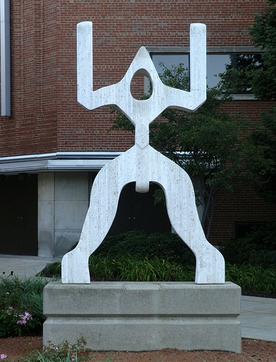
Referee is a public artwork by American artist Tom Queoff, located on the south entrance of the UW–Milwaukee Panther Arena, which is in Milwaukee, Wisconsin, United States. The 9 foot laminated marble sculpture depicts an abstracted referee with legs spread apart and arms raised.
98. Washington Park
Washington Park (1900) originally called West Park is a park in Milwaukee, Wisconsin, in the United States. From 1892–1958 the park was home to the Milwaukee County Zoo. It is one of the oldest parks in Milwaukee and it was added to the Wisconsin Architecture and History Inventory in 2019.
99. Buffalo Building
The Baumbach Building, also known as the Midwest Lamp Company or The Buffalo, is a historic building in Milwaukee, Wisconsin, United States. Part of the Historic Third Ward, the five-story building was one of the city's first Chicago School factories.
100. La Causa Community Enrichment Center
The Lohnam Funeral Home and Livery Stable are located in Milwaukee, Wisconsin. In 1988, the site was added to the National Register of Historic Places. According to its application, it is an "example of a 19th century commercial livery stable in the day".
Wikipedia: Lohman Funeral Home and Livery Stable (EN), Website, Heritage Website
Share
How likely are you to recommend us?
Disclaimer Please be aware of your surroundings and do not enter private property. We are not liable for any damages that occur during the tours.
